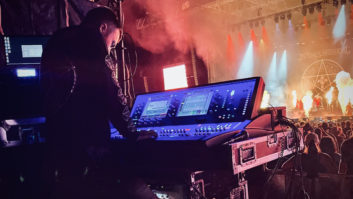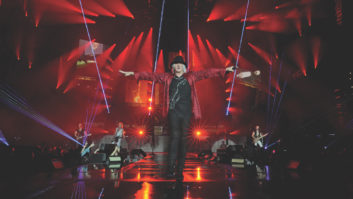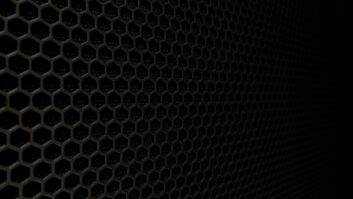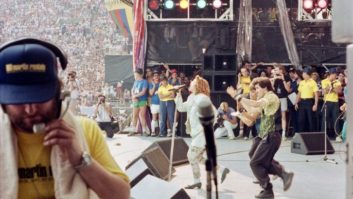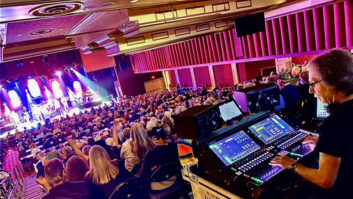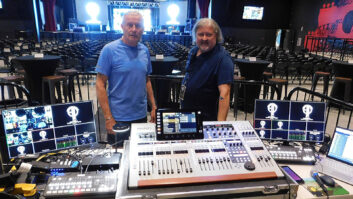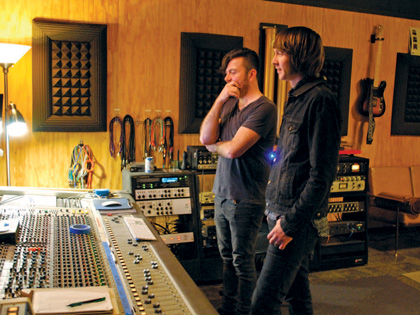
Inside the studio’s unassuming walls, the stories are as memorable as the music. When Iggy and the Stooges dropped by to record a cover of Junior Kimbrough’s “You Better Run,” the punk/rock icon menaced the studio, shirtless just like at a show, his Stooges blasting back at him through the monitors while he barked his vocals.
“We do that a lot,” laughed Matt Patton, co-owner of Dial Back and bassist for Drive-By Truckers and The Dexateens. “Especially if we’re having trouble getting a singer to come out of the shell, we’re just like, forget about all this, we’re gonna blast this track at you.”
Tucked inside a former church parsonage on a quiet street in the hills of Water Valley, Miss., Dial Back allows musicians like Bobby Bare Jr., Alvin Youngblood Hart and Water Liars to unplug from the world while cranking up a roomful of vintage amps and instruments, cap.tured via classic mics and tape machines.
Engineer Bruce Watson opened the studio in 2009 as the successor to his Money Shot studios, where he recorded Hill Country and Delta blues musicians for Fat Possum Records. Watson continued that tradition at Dial Back before deciding to move to Memphis in 2015.
“[Bruce] called me at eight in the morning after we’d worked until about 2 a.m.,” recalls engineer Bronson Tew. “I was here doing Seratones for Bruce, and Jimbo [Mathus, of Squirrel Nut Zippers] was producing. He was like, ‘You wanna buy the studio?’”

Watson advised Tew to find a partner, and Tew’s first call was to Patton, an old friend who had done session work at Dial Back and lived nearby. The two acquired Dial Back in April 2016.
Dial Back has a homey feel that’s a function of the layout as much as the owners’ friendly, laid-back vibe. Down a few steps from the main tracking room is a small hangout with couches and an apartment where bands can stay. Outside, bench seating overlooks a fire pit and a cooler stocked with domestic brews. The three main studio areas—control room, drum room and the main tracking room—are connected by hallways that have been converted into isolation booths. All of the tracking rooms are built as rooms-within-rooms.
“Because [the building] has a traditional foundation, we don’t have the trapped-bass problems you’d have with a cement foundation,” notes Tew. “Low end escapes below us, and the attic is eight feet in the peak, so low end can escape [there]. You’re not having standing-wave issues.”
Originally used as the control room, the drum room has a floating floor built an additional eight inches off the original floor, giving it additional room for low end to go. The unfin.ished bead board on the walls has been cured over years of near-constant cigarette smoking by Watson and company, giving the room an amber glow.
“I love the isolation here [in the drum room], because I can make decisions while we’re tracking. I really am trying to get it right going down to tape. That’s why we don’t EQ to tape, either, so we have just a good, straight-to-tape sound. We’ve got three vintage drum kits, five great snares and a bunch of cymbals. And we just move stuff around until sounds right.”
Tew prefers to track live to a 1-inch Otari 8-track machine through a Sony 3036 console, and then he ports to Pro Tools for overdubs if needed. He uses drum mics sparingly—often only an RCA 77 overhead, and maybe a Mojave for kick or snare; typically there are no more than four total.
“[Live takes are] the goal,” Tew says. There’s never a ‘scratch’ anything. They can redo the vocal, but the first one should be keepable.”
There are no digital effects at Dial Back, only springs, plates, tapes and tubes. The effects racks house Telefunken V72 tube preamps, Frank Lacy compressors and pre’s, and a tape space echo. Tew also uses a Lawson plate reverb, and they’re currently building a dedicated echo chamber.
“I think [artists] come here for the earthiness of this region,” said Patton. “This is about 45 minutes south of Holly Springs, and people are drawn to the old stomping grounds of T-Model Ford or R.L. Burnside. They think they’re gonna come get some of that magic on it, and I think they’re right.”

